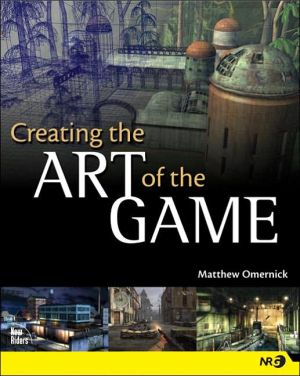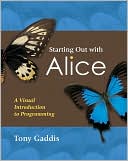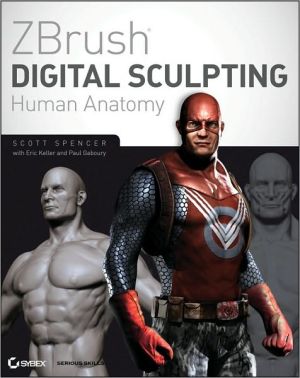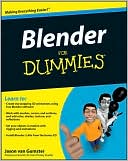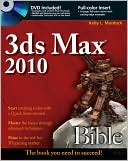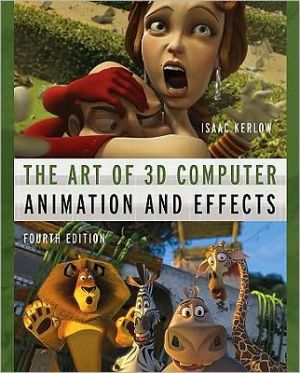Creating the Art of the Game
The key word here is art: the dynamic 3D art that defines the world of computer games. This book teaches you everything you need to know about the planning, modeling, texturing, lighting, effects creation, and interface design that go into creating today's most advanced and stunning video games. You'll be learning from a master-veteran 3D artist and instructor Matthew Omernick-as you progress through the carefully chosen, software-agnostic tutorials that make up this beautiful, full-color...
Search in google:
The key word here is art: the dynamic 3D art that defines the world of computer games. This book teaches you everything you need to know about the planning, modeling, texturing, lighting, effects creation, and interface design that go into creating today's most advanced and stunning video games. You'll be learning from a master-veteran 3D artist and instructor Matthew Omernick-as you progress through the carefully chosen, software-agnostic tutorials that make up this beautiful, full-color volume. The end result will be skills you can apply to whatever 3D tool you choose and whatever wildly imaginative game you can think up. Through a unique combination of explanation, tutorials, and real world documentation-including discussions of the creative process entailed in some of today's most popular games augmented by screen captures and descriptions—you'll quickly come to understand the workflow, tools, and techniques required to be a successful game artist. In addition to learning the ropes of game art, you'll also find in depth tutorials and techniques that apply to all aspects of 3D graphics. Whether you are using Photoshop, 3ds max, Maya, or any other computer graphics software, you'll find a wealth of information that you can continue to come back to time and time again.
Foreword: Making GamesxvTurning Lead into Gold, Plastic, Wood, etc.xviEmbrace the ConstraintsxviIntroductionxxiWho Should Read This Book?xxiiA True Artist FirstxxiiWhat to Expect from This BookxxiiiWhat This Book CoversxxiiiMaking the GamexxivThemesxxvi1Preparing to Create3How and Where to Collect Reference4Seek the Best5Concept Art6Setting the Quality Bar9Blocking Out Your Scene10Conclusion142Modeling Theory17Primitives18Components20Transformation Tools20Polygons and Memory21Polygon Limits24Displaying Polygon Count25Normals25Backface Culling27Polygon Reduction28Modeling Techniques33Extrude34The Line Tool37Common Mistakes39Overlapping Faces39T-Junctions40Stray Vertices40Star-Like Faces42Conclusion433Introduction to Texturing45Game Texturing Theory46Detail in Texture47How to Choose and Create Textures48File Formats50Color Depth51Resolution (Texture Size)51What Is Resolution?52Photoshop52Image Resizing53Where Do I Use My Pixels?54Changing Color Depth56More About Color58Digital Photography59Digital Photos for Reference59Digital Photos for Textures60Making a Texture Tilable61Actions65Conclusion664Advanced Texturing69The Power of Layers70Creating Layers73Photoshop Tools75Image Menu75Layer Menu76Filters78Alpha Channels81What Is an Alpha Channel?82What Can Alpha Do?84How Do We Bring the Alpha Channel into the 3D Package?94How to Make Alpha Channels97Game Engines and Alpha101Conclusion1025Applying Textures105Assigning Materials105Maya's Hypershade1063ds max Material Editor111What Are UVs?115Projection Mapping116Editing UVs120Composite Textures and UVs121Assigning UVs122Multiple UV Sets123Tiling125How Do You Tile?127Conclusion1286Advanced Modeling131Organic Versus Inorganic Models132Organic Modeling Methods132Smoothing132The Sculpt Polygons Tool136Soft Selection139Subdivision Surfaces142Vertex Normals and Smoothing Groups146Modeling with Triangles148Cleaning Up Your Geometry151Delete History151Freeze Transformations152Center Pivot152Merging or Welding Vertices154Maya's Cleanup Tool154Conclusion1547Lighting Principles157Color158Target Audience158Balancing Color159Mood160Traditional Lighting Setup162Working with 3D Lights166Directional Light166Ambient Light166Spotlights167Point or Omni Lights167Global Illumination168Falloff168Effective Lighting Practices170Pools of Light170Be Creative172Experiment172Conclusion1728In-Game Lighting175Vertex Lighting176Vertex Color176Vertex Alpha181Hiding Repetition182Reusing Textures183Understanding Vertex Lighting184Things to Watch Out For188Soft and Hard Edges190Lightmaps191Per-Pixel Lighting194Normal Maps195Dynamic Lighting202Troubleshooting202Black or Invisible Faces on Geometry202Inconsistency202Blown Out or Overexposed Lighting203Conclusion2039Effects205Particle Effects206Textures for Effects208Billboards212Fog213Water214Clouds216Decals217Conclusion21810Tips and Tricks221The Metal Box222Trees and Vegetation227Reflection235Placed Shadows236The Importance of Shadow236Conclusion24411User Interface Design and Creation247The Shell248In-Game User Interface249Heads-Up Display251Composition253Plan, Plan, Plan254Localization254Hardware Approval255Building the UI256Conclusion25612Wrapping It Up259Source Control260Collision Geometry261Skydomes263Light Volumes266Tagging Materials266Bug Fixing268Collision Issues268Z-Fighting and Problem Normals268Just Plain Ugly Art269Polishing269Major Milestones269Alpha270Beta271Gold271Conclusion272Index275
